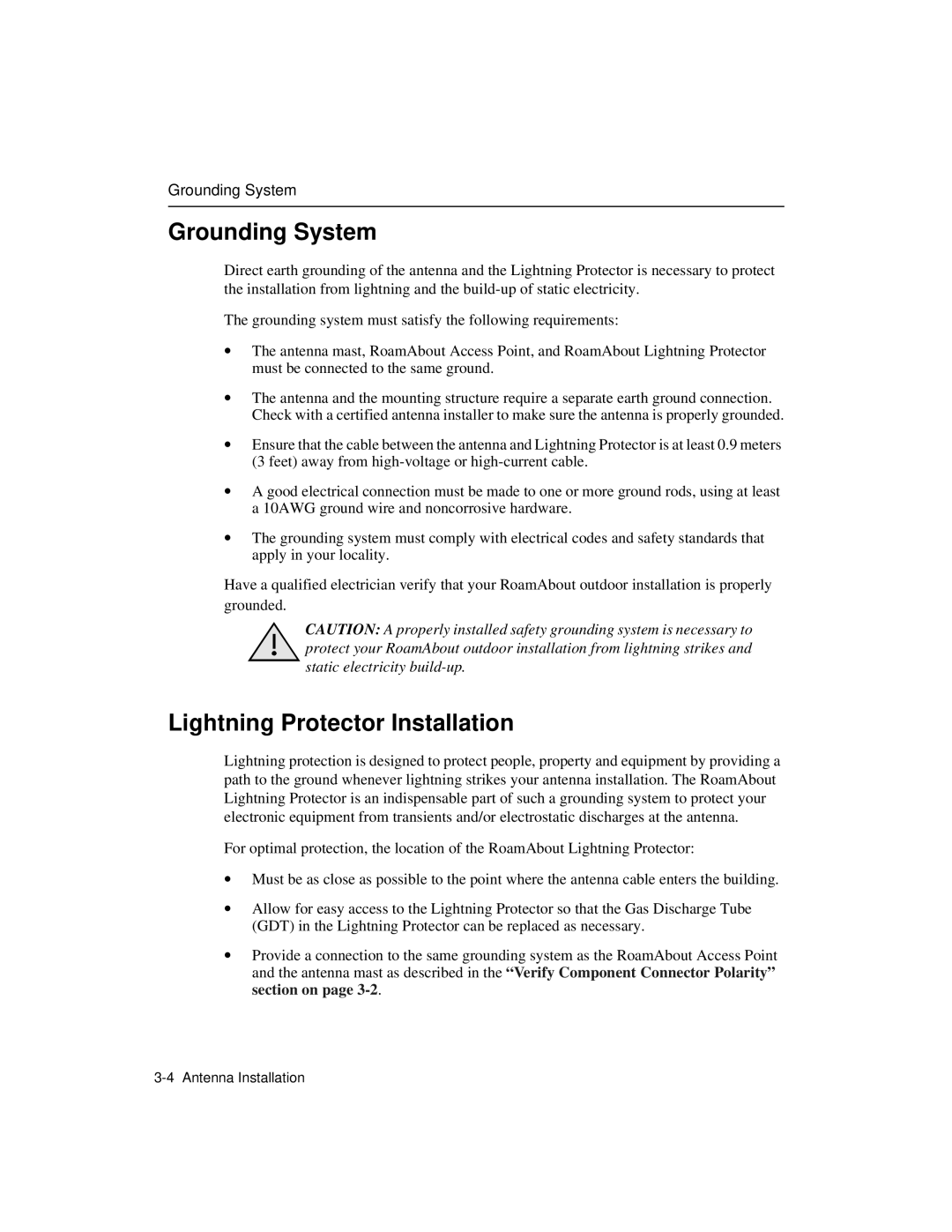
Grounding System
Grounding System
Direct earth grounding of the antenna and the Lightning Protector is necessary to protect the installation from lightning and the
The grounding system must satisfy the following requirements:
∙The antenna mast, RoamAbout Access Point, and RoamAbout Lightning Protector must be connected to the same ground.
∙The antenna and the mounting structure require a separate earth ground connection. Check with a certified antenna installer to make sure the antenna is properly grounded.
∙Ensure that the cable between the antenna and Lightning Protector is at least 0.9 meters (3 feet) away from
∙A good electrical connection must be made to one or more ground rods, using at least a 10AWG ground wire and noncorrosive hardware.
∙The grounding system must comply with electrical codes and safety standards that apply in your locality.
Have a qualified electrician verify that your RoamAbout outdoor installation is properly grounded.
CAUTION: A properly installed safety grounding system is necessary to protect your RoamAbout outdoor installation from lightning strikes and static electricity
Lightning Protector Installation
Lightning protection is designed to protect people, property and equipment by providing a path to the ground whenever lightning strikes your antenna installation. The RoamAbout Lightning Protector is an indispensable part of such a grounding system to protect your electronic equipment from transients and/or electrostatic discharges at the antenna.
For optimal protection, the location of the RoamAbout Lightning Protector:
∙Must be as close as possible to the point where the antenna cable enters the building.
∙Allow for easy access to the Lightning Protector so that the Gas Discharge Tube (GDT) in the Lightning Protector can be replaced as necessary.
∙Provide a connection to the same grounding system as the RoamAbout Access Point and the antenna mast as described in the “Verify Component Connector Polarity” section on page
